A wrist brace is a supportive orthopedic device designed to relieve pain, provide balance, and promote recovery within the wrist and hand region. These braces lower inflammation, reduce excess motion and help injured or weakened structures. Wrist braces are used by people coping with conditions like carpal tunnel syndrome, sprains, and fractures. Those in search of preventive measures during physical activities also benefit from these braces.
In this comprehensive guide, we will delve into the different types of wrist braces available and highlight five key tips to ensure you source the best braces on the market in 2024.
Table of Contents
Market overview for wrist braces
Types of wrist braces
5 tips for sourcing wrist braces in 2024
Final thoughts
Market overview for wrist braces
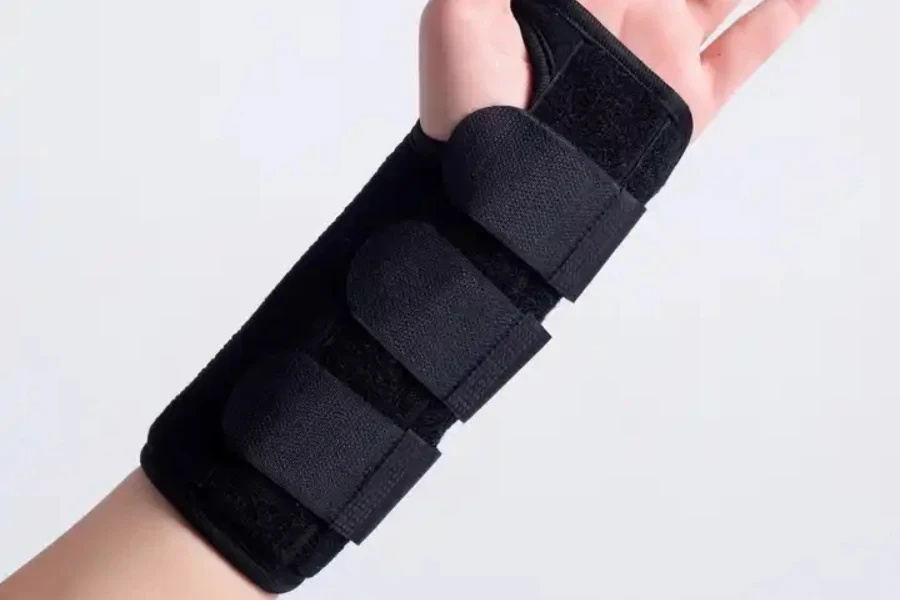
The wrist braces market was estimated to be around USD 300 million in 2020 and is expected to grow at a compound annual growth rate (CAGR) of around 5% from 2021 to 2026(1). Another source suggests that the global wrist and hand braces market is projected to reach USD 366.2 million by 2027, growing at a CAGR of 5.1% over the period 2020-2027(2).
The growing incidence of musculoskeletal situations such as carpal tunnel syndrome and wrist sprains prompts the market demand for wrist braces. Also, the aging worldwide population leading to a multiplied prevalence of arthritis and joint-related issues contributes to the high demand.
In 2020, the wrist and hand braces market in the U.S. was valued at USD 69.8 million. Looking ahead, China, the second-largest global economy, is expected to experience robust growth with a projected market size of USD 78 million by 2027, showcasing a CAGR of 8.2% during the analysis period from 2020 to 2027.
Noteworthy growth is also anticipated in Japan and Canada, with forecasted CAGRs of 2.8% and 4%, respectively, over the same period. Germany is expected to see growth at a CAGR of approximately 3.6% within the European market.
Types of wrist braces
1. Carpal tunnel braces
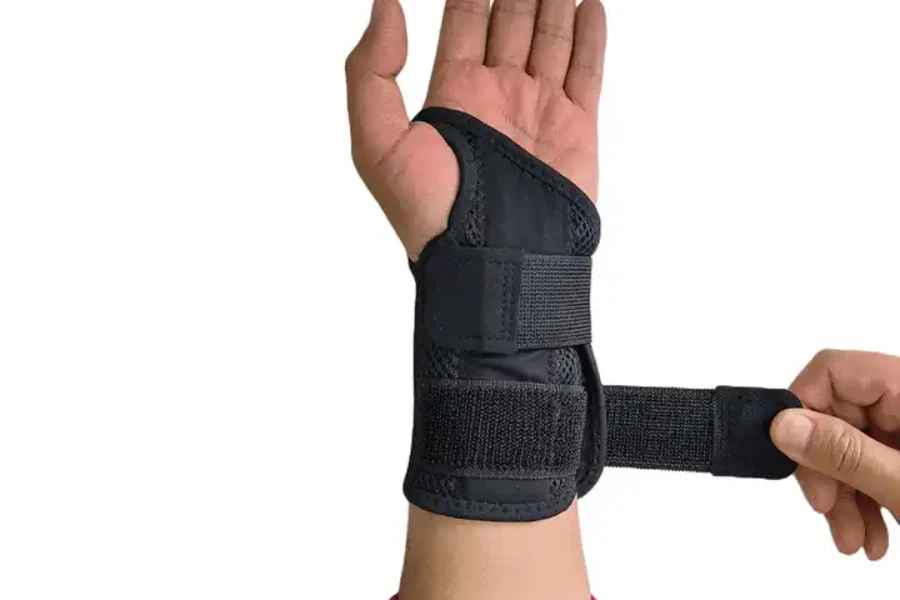
Carpal tunnel wrist braces are particularly designed to offer assistance and alleviate symptoms related to carpal tunnel syndrome. They usually feature an inflexible splint that holds the wrist in a neutral position, reducing stress at the median nerve. This layout helps to relieve pain, numbness, and tingling because of compression of the nerve within the carpal tunnel.
Carpal tunnel braces are applicable for individuals experiencing symptoms related to repetitive hand movements, such as typing or assembly line work. The brace’s rigid structure ensures that the wrist remains in a therapeutic position, promoting right alignment and decreasing strain at the affected areas.
2. Wrist splints
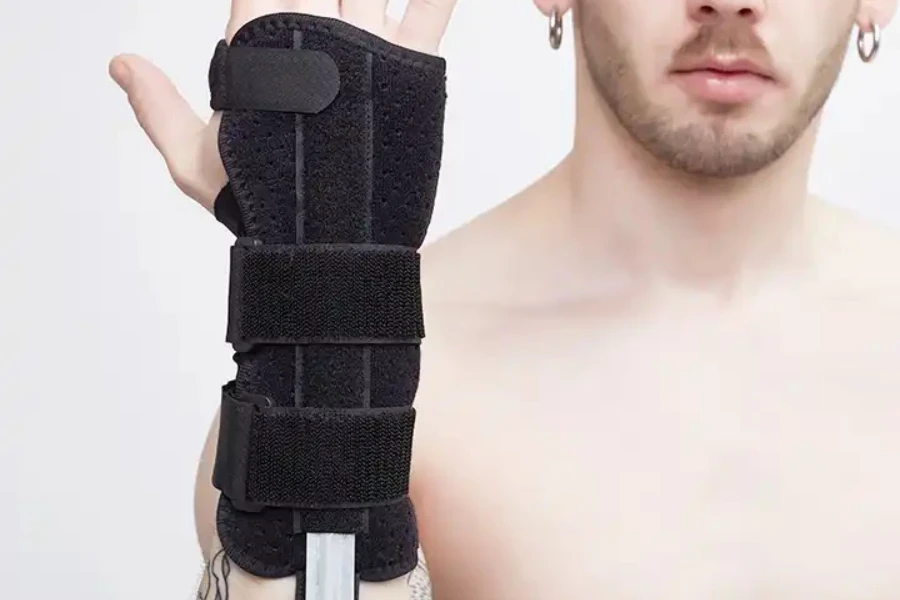
Wrist splints are flexible braces that provide assistance and immobilization for wrist injuries like sprains and strains. The wrist braces commonly encompass a lightweight, breathable cloth with adjustable straps for a customizable fit. Wrist splints provide balance to the wrist joint and, at the same time, permit a degree of movement, making them appropriate for various activities.
These braces are normally encouraged for individuals recovering from minor accidents or those in search of preventive support during physical activities. The design of wrist splints permits stability between support and flexibility.
3. Thumb spica braces
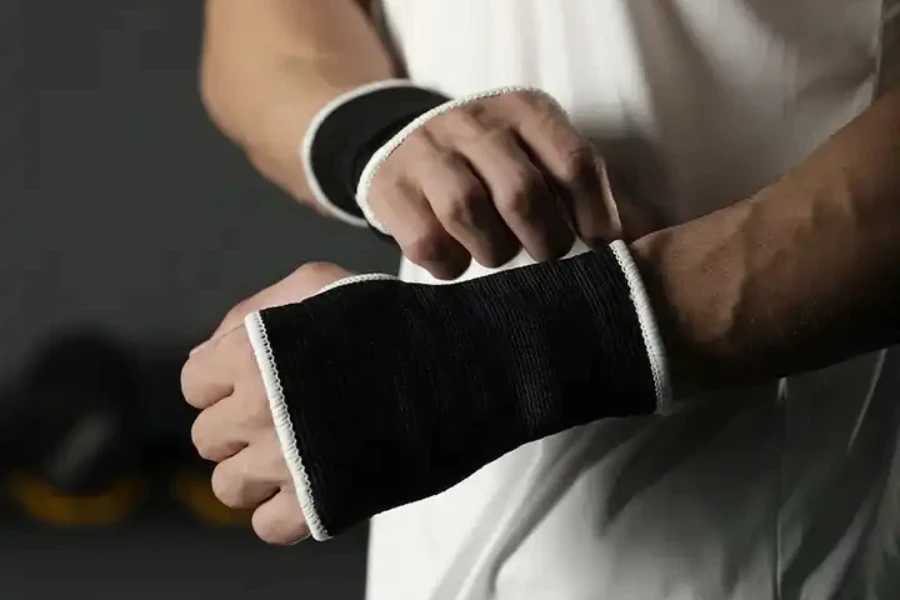
Thumb spica braces are tailor-made to offer aid to the thumb and wrist, frequently extending into the forearm. They are beneficial for situations such as thumb sprains, arthritis, or De Quervain’s tenosynovitis. The wrist braces immobilize the thumb and wrist in an impartial or slightly prolonged position, lowering pressure on the affected ligaments and tendons.
Thumb spica braces are suited to people with thumb injuries or those requiring stabilization following surgery. The design ensures that the thumb is securely held in place, stopping excessive movement and promoting recovery of the injured structures.
4. Compression wrist sleeves
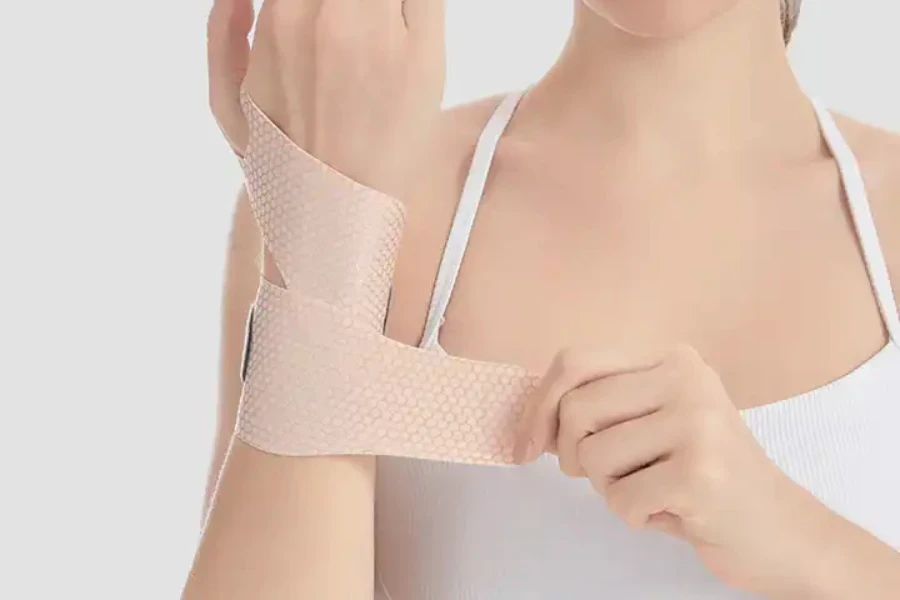
Compression wrist sleeves are lightweight and provide gentle compression to help the wrist without restricting movement. They are frequently made of elastic or neoprene materials, supplying a snug match that enhances blood flow and reduces swelling. Compression wrist sleeves are suitable for individuals undertaking sports activities that contain repetitive wrist motions, such as weightlifting or tennis.
Compression wrist sleeves are popular for their comfortable and unobtrusive layout. This makes them a favored choice for those looking for moderate support and preventive measures during physical activities.
5 tips for sourcing wrist braces in 2024
1. Cost

Wrist braces come at varying price points, depending on features, brand, material, and particular capabilities.
- Entry-level wrist support, like basic wrist sleeves or easy elastic braces, typically ranges from USD 10 to USD 20. Perfect for individuals seeking general wrist support for mild discomfort or preventive measures during activities like typing or sports. These are suitable for those without specific medical conditions.
- Wrist splints and more advanced compression sleeves fall within the USD 20 to USD 50 range, offering increased support and features. Target audiences are people with moderate wrist issues or those recovering from injuries. This level caters to individuals requiring additional support, compression, and features for conditions like sprains, strains, or mild to moderate carpal tunnel syndrome.
- For specialized needs, such as carpal tunnel or thumb spica braces, prices can go from USD 30 to USD 100 or more. These braces are designed for therapeutic purposes, providing targeted support and often incorporating advanced features. The higher price range reflects the specialized nature and enhanced functionality of these braces.
Always strike a balance between your budget and the level of assistance required, considering that more advanced braces offer superior functions but come at a higher fee.
2. Adjustability
The adjustability of a wrist brace ensures a snug and powerful fit. You need to look for braces with adjustable straps or closures, allowing users to personalize the level of support and compression. This adaptability is especially useful as swelling varies throughout the restoration period and personal choices for tightness differ.
An adjustable wrist brace ensures a stable fit without being overly constrictive, promoting the finest support tailor-made to users’ specific needs and comfort levels.
3. Size
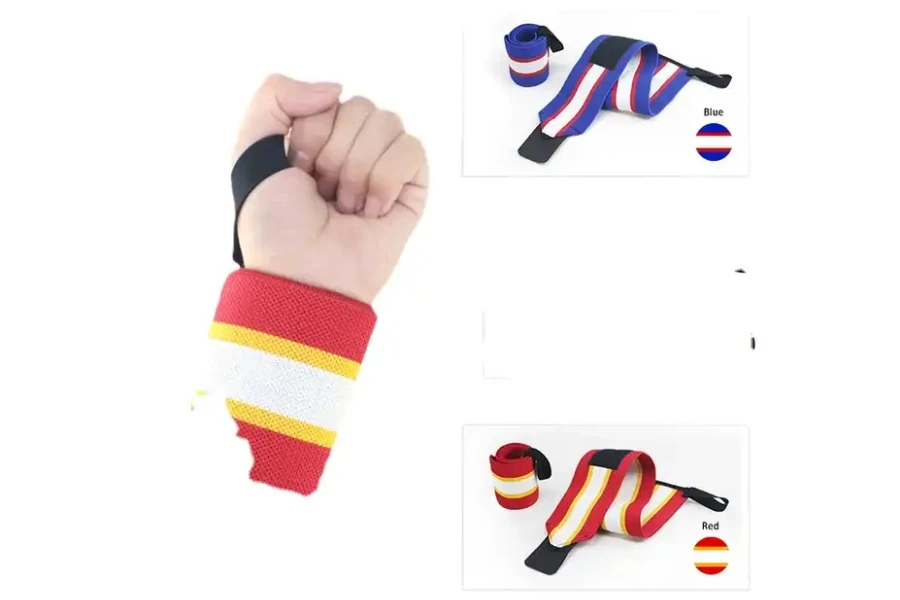
Most wrist braces are available in numerous sizes, generally starting from small to extra-large. To know the right size, measure the circumference of the wrist at its narrowest point.
- Small sizes accommodate wrists up to 6 inches
- Medium for 6-7 inches
- Large for 7-8 inches
- Extra-large for 8 inches and above
Choosing the precise length ensures a comfortable fit without being too loose or tight.
4. Material
Wrist braces are crafted from distinct materials, with each presenting its own benefits. The materials include neoprene, elastic materials, and breathable fabrics.
- Neoprene provides top-notch assistance, warmth retention, and durability, making it a popular choice for knee braces. Renowned for its ability to offer excellent support to the knee joint, neoprene also acts as an insulator, retaining heat and promoting blood circulation during wear.
- Elastic materials such as spandex, elastane, and latex are chosen for their remarkable flexibility and snug fit. They are particularly well-suited for compression sleeves. These materials allow the knee brace to conform closely to the contours of the knee, ensuring a secure fit that provides both flexibility and compression.
- Breathable fabrics, such as mesh or perforated materials, play a crucial role in enhancing comfort during extended wear of knee braces. These materials facilitate air circulation, preventing heat buildup and allowing the skin to breathe.
5. Design
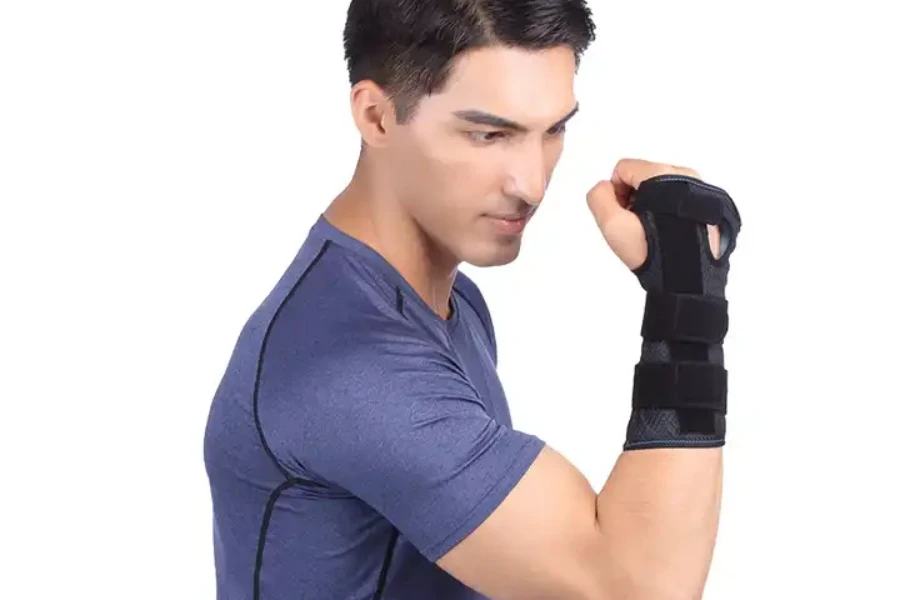
Wrist braces come in a diverse range of designs to cater to the special needs users.
- Some wrist braces feature an open layout, prioritizing elevated airflow and flexibility. This design is ideal for situations where breathability and freedom of movement are crucial, making them suitable for individuals who require mild support without sacrificing comfort.
- Inflexible splints characterize closed designs. They provide maximum aid and stability, making them often recommended for severe wrist injuries that demand rigid support. These braces ensure a high level of immobilization and are designed to restrict movement to facilitate the healing process.
- Wrap-around designs offer flexibility and adjustability, providing ease of application and the ability to adapt to various wrist sizes and shapes. This type of wrist brace is versatile and can be customized for different levels of support, making it suitable for a range of injuries and conditions.
- Ergonomic designs prioritize comfort during prolonged use, making them appropriate for individuals requiring extended assistance and support. These braces are crafted with user comfort in mind, considering factors such as materials, padding, and overall design to minimize discomfort during prolonged wear.
Final thoughts
While buying a wrist brace, consider factors like the kind, cost, adjustability, size, material, and design. Understanding the purpose of every type, starting from carpal tunnel braces to compression wrist sleeves, enables customers to pick the most suitable option based on their desires. For a wide range of wrist braces, explore the options on Alibaba.com and make an informed choice tailor-made to your buyer’s needs.




 Afrikaans
Afrikaans አማርኛ
አማርኛ العربية
العربية বাংলা
বাংলা Nederlands
Nederlands English
English Français
Français Deutsch
Deutsch हिन्दी
हिन्दी Bahasa Indonesia
Bahasa Indonesia Italiano
Italiano 日本語
日本語 한국어
한국어 Bahasa Melayu
Bahasa Melayu മലയാളം
മലയാളം پښتو
پښتو فارسی
فارسی Polski
Polski Português
Português Русский
Русский Español
Español Kiswahili
Kiswahili ไทย
ไทย Türkçe
Türkçe اردو
اردو Tiếng Việt
Tiếng Việt isiXhosa
isiXhosa Zulu
Zulu